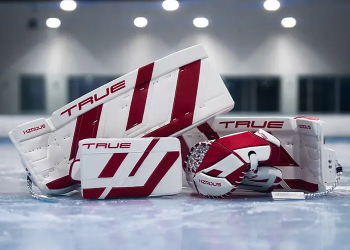A classic suit is a timeless piece that every man should own. It exudes sophistication, confidence, and versatility, making it suitable for various occasions, from formal events to business meetings and even casual outings. However, styling a suit effectively requires attention to detail, from the fit to accessories and color combinations. Here’s a comprehensive guide to styling a classic suit and making it your go-to wardrobe essential.
Start with the Right Fit
The foundation of a well-styled suit lies in its fit. An ill-fitting suit can undermine even the most elegant look:
- Tailored Perfection:
- Invest in professional tailoring to ensure the suit complements your body shape.
- Pay attention to key areas like shoulders, waist, and length of the jacket and trousers.
- Avoid Overly Tight or Baggy Fits:
- A slim fit or modern fit is ideal for a clean and contemporary look.
- Key Measurements to Check:
- The jacket should lie flat without pulling.
- Trousers should break just above the shoes.
A well-fitted suit enhances your silhouette and boosts your confidence.
Choose the Right Fabric
The fabric of your suit plays a significant role in its appearance and comfort:
- Wool:
- A versatile, breathable fabric suitable for year-round wear.
- Linen:
- Ideal for warmer climates, though it tends to wrinkle more easily.
- Cotton:
- A lightweight option for casual settings.
- Blended Fabrics:
- Combine durability and comfort for everyday wear.
High-quality fabrics ensure your suit looks polished and feels comfortable.
Select the Perfect Shirt
The shirt you pair with your suit sets the tone for your outfit:
- Classic White Shirt:
- A must-have for formal occasions; pairs well with any suit color.
- Light Blue Shirt:
- Adds a touch of sophistication and works well for business settings.
- Patterned Shirts:
- Subtle stripes or checks can add personality without overwhelming the look.
Ensure the shirt fits well, with no gaping buttons or excess fabric.
Master the Art of Color Coordination
Color coordination is key to a cohesive and stylish outfit:
- Neutral Tones:
- Stick to classic colors like navy, charcoal gray, and black for maximum versatility.
- Accent Colors:
- Use ties, pocket squares, or socks to introduce pops of color.
- Monochrome Looks:
- Opt for shades within the same color family for a sleek, modern appearance.
Understanding color theory helps you create balanced and visually appealing combinations.
Accessorize Thoughtfully
Accessories elevate your suit and add a personal touch:
- Ties and Pocket Squares:
- Choose complementary patterns and textures to add depth to your outfit.
- Watches:
- A classic timepiece adds sophistication and completes the look.
- Cufflinks:
- Ideal for formal events; opt for minimalist designs in silver or gold.
- Belts and Shoes:
- Match the color of your belt to your shoes for a cohesive appearance.
Avoid over-accessorizing to maintain a clean and polished look.
Consider the Occasion
Adapt your suit styling to suit the event:
- Formal Events:
- Pair a dark suit with a crisp white shirt, a silk tie, and polished oxford shoes.
- Business Settings:
- Opt for a navy or charcoal suit with a light blue shirt and a conservative tie.
- Casual Outings:
- Ditch the tie and pair your suit with a crewneck sweater or a patterned shirt.
Styling your suit appropriately ensures you’re always dressed for the occasion.
Pay Attention to Footwear
The right shoes can make or break your suit:
- Oxford Shoes:
- Perfect for formal and business attire.
- Derby Shoes:
- Slightly more casual but still elegant.
- Loafers:
- A versatile option for smart-casual looks.
- Sneakers:
- Pair with a suit for a contemporary, relaxed vibe (ensure the sneakers are clean and minimalist).
Invest in quality footwear to complement your suit and enhance your overall appearance.
Experiment with Layers
Layering adds depth and versatility to your suit:
- Vests:
- A three-piece suit adds formality and a vintage touch.
- Sweaters:
- Wear a fine-knit sweater under your jacket for warmth and style in colder months.
- Overcoats:
- A tailored overcoat or trench coat pairs beautifully with a suit for winter wear.
Layering allows you to adapt your suit for different seasons and settings.
Keep It Well-Maintained
Proper care ensures your suit remains in top condition:
- Dry Cleaning:
- Limit dry cleaning to avoid wear and tear; spot clean when possible.
- Storage:
- Use wooden hangers to maintain the shape of the jacket.
- Store suits in breathable garment bags to protect against dust and moths.
- Pressing:
- Iron or steam your suit to remove wrinkles and keep it looking sharp.
Regular maintenance extends the life of your suit and keeps it looking fresh.
Build a Collection Over Time
As you become more comfortable styling suits, consider expanding your collection:
- Different Colors:
- Add lighter shades like beige or pastel blue for variety.
- Seasonal Fabrics:
- Incorporate linen suits for summer and tweed for winter.
- Bold Patterns:
- Experiment with pinstripes, plaids, or herringbone for a distinctive look.
Building a versatile collection ensures you’re prepared for any occasion while expressing your unique style.
A classic suit is more than just a wardrobe staple—it’s a statement of elegance, professionalism, and individuality. By focusing on fit, fabric, and thoughtful styling, you can make the most of this timeless piece and elevate your overall fashion game.








